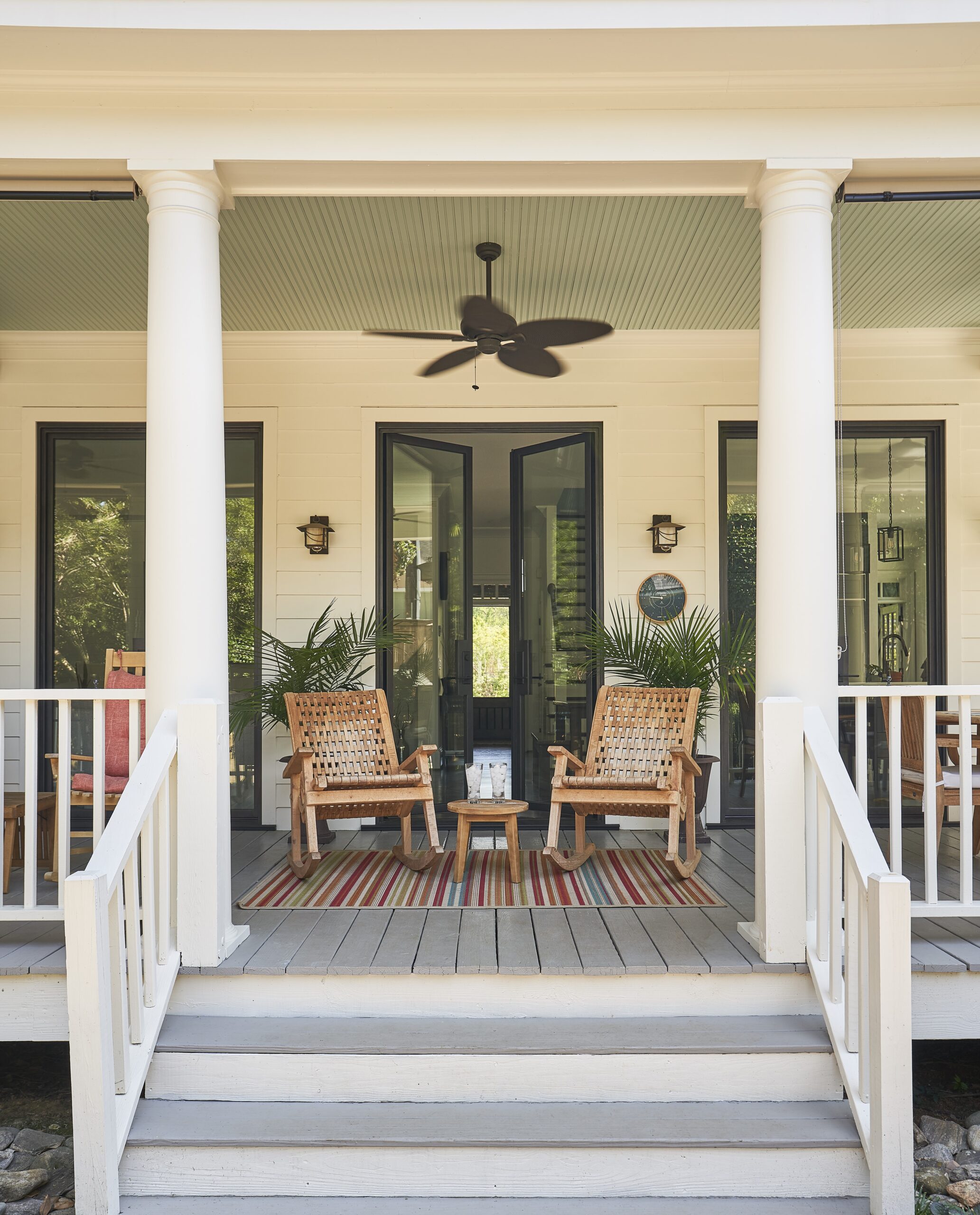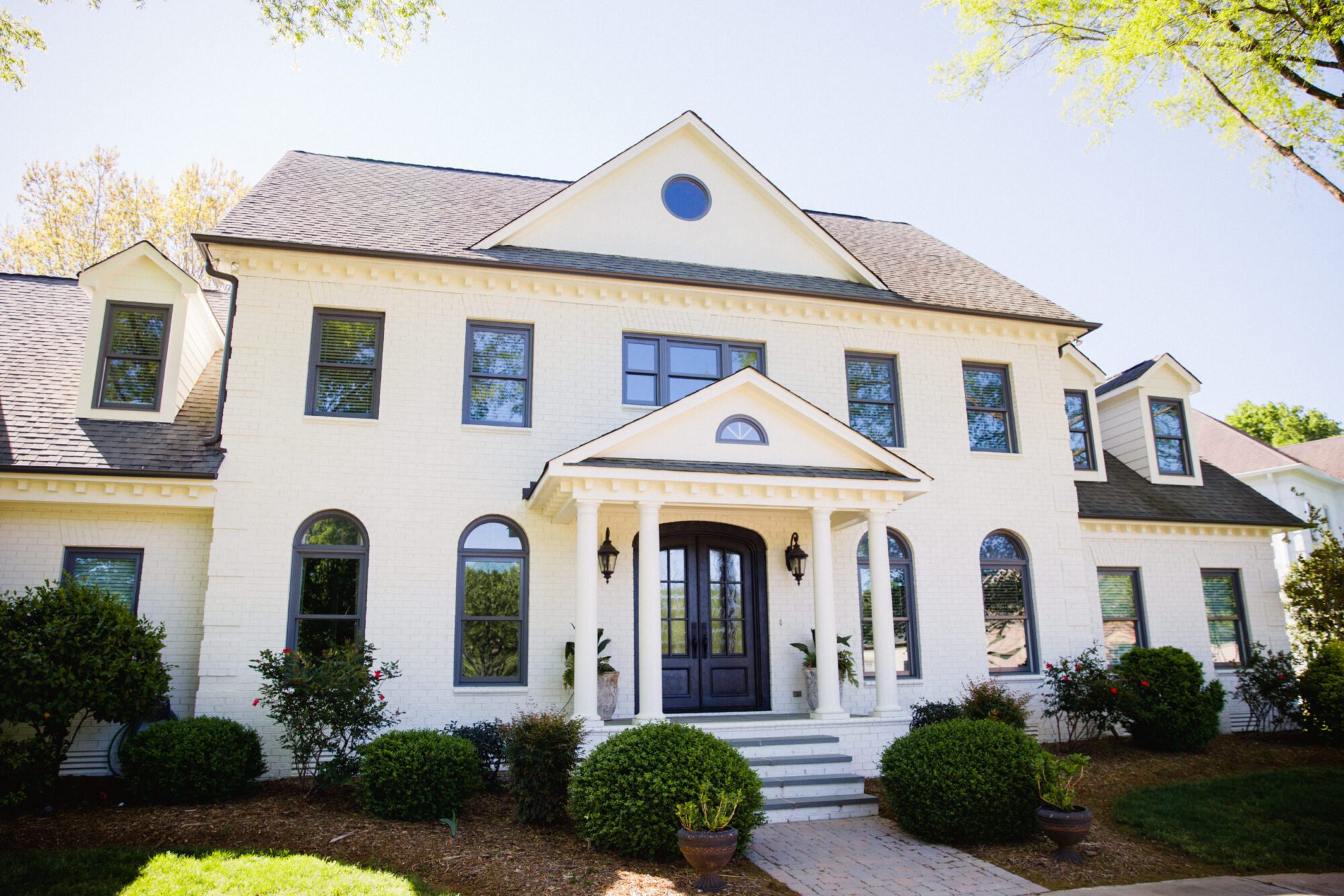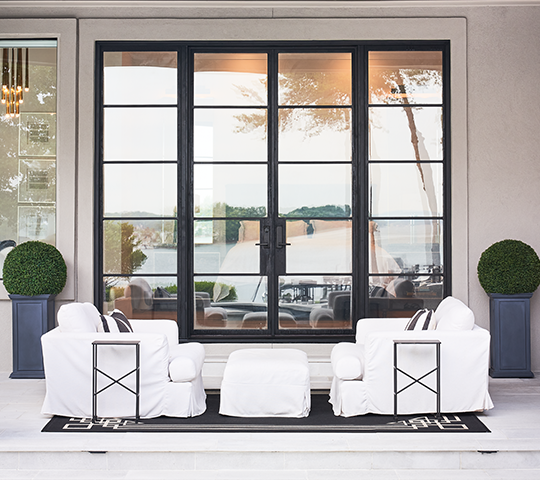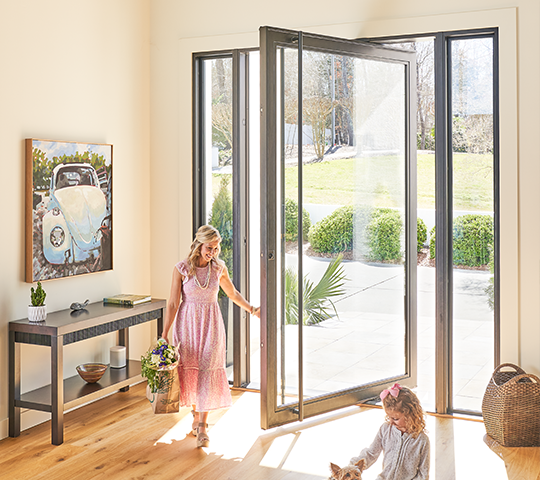Homeowners put a lot of thought into their entry doors. After all, exterior doors are an essential factor in the aesthetic appeal of your home. Depending on the type of door, an updated entryway can even provide a healthy boost in property value.
Steel and wooden doors are two popular options. Steel is a versatile material that allows for plenty of customization, low upkeep, and high durability. Wood is a more classic option that can be stained and painted to suit your taste, but it doesn’t always fare well over the long term. Let’s examine the pros and cons of both.
Comparing Steel and Wood Doors
| Feature | Steel Doors | Wood Doors |
|---|---|---|
| Strength and Durability | Strength and durability are major components of steel. If you are looking for that in your home, a steel door is best. | Wood is a porous material. Humidity and precipitation will cause it to chip and crack in areas, making it vulnerable and easy to fracture. |
| Curb Appeal | When it comes to curb appeal, steel stands out. With Clark Hall’s customization, this is a significant plus and will increase your home value. | Many wood products can be stained, sanded, or painted to fit your home’s vision. |
| Customization and Design | Steel is a versatile product that flexes into many different shapes and designs, making it the leading product in the customization and design category. | Wood is difficult to work with in terms of customization. |
| Cost | While steel doors may cost more upfront, they will cost you less in the long run due to the durability of the finish. | Wood doors cost less than steel in most cases. If your home faces a direction with strong sun exposure, a wood product may need more refinishing due to sun damage. |
| Security | The weight of steel makes it a strong choice for a homeowner who wants a layer of added security to their home. | Traditional wood doors are not a very substantial product to use for front doors. They break down easily and are not as strong as steel. |
| Maintenance | With steel doors, maintenance is minimal. We suggest cleaning your doors twice a year. | Maintenance on wood doors varies depending on the use of the doors and proximity to the sun. |
| Energy Efficiency | Steel doors are energy efficient because they are made with impermeable materials, helping maintain the temperature in a home. | Some wooden doors have insulated cores; however, wood is a porous material, making it more prone to heat transfer and, therefore, less energy efficient. |
| Aesthetics | Sleek and chic, steel doors are aesthetically modern. They are well-suited for a wide range of homes that want a clean look, like modern, minimalist, and contemporary styles. | Wooden doors are extremely versatile and can be suited to many styles with different accessories and finishes. However, they are best suited for classic, Craftsman, rustic, and country style homes. |
Features of Steel Doors vs. Wood Doors
Deciding which material is right for your front door involves several important considerations. Are you thinking of safety and security, design and aesthetics, or a combination? These factors, plus maintenance, are something to keep in mind.
Strength and Durability
No matter what type of door you choose, you’ll want an entryway that’s able to stand up to all weather types and security risks.
Steel Doors
Unlike other types of doors, steel is known for its strength. A steel door is virtually impenetrable and can last for decades. Clark Hall Doors are made of hollow, 14-gauge tubular steel insulated with polyurethane foam that can withstand harsh weather conditions,making the door impact-rated for hurricanes and natural disasters.
Wood Doors
Solid wood doors can also be strong, but they are at risk of splintering, cracking, sagging, or warping over time, making them less durable in the long term.
Curb Appeal
Your door is one of the first things people see — making curb appeal a top priority for most homeowners.
Steel Doors
Steel doors are a modern design that provides a standout aesthetic. A quality steel door allows for a high level of customization in the design, cut-outs, and finishes. Steel doors also offer 100% ROI, taking the cake on curb appeal and added property value.
Wood Doors
Wooden doors have a classic look and can be stained and refinished as needed to provide added curb appeal.
Customization and Design Options
Our custom steel doors are handcrafted, meaning each one is completely bespoke. We offer a range of neutral finishes like Cinnamon and Slate, plus an exclusive catalog of colors. Buyers can also choose from ten different types of glass to meet their design needs. The main design option for wooden doors is the type of wood. Choosing poplar, cedar, oak or cherry, to name a few, changes the look of the door. Paint colors and stains are another way to customize.
Cost Comparison: Steel Doors vs. Wood Doors
Both steel and wood doors can range significantly in price depending on the weight, design, and level of customization. For wooden doors, the price will depend on whether it’s a solid door or hollow core, as well as the type of wood (like mahogany, cedar, etc). A hand-crafted steel door is more expensive upfront but will require much less maintenance over time. Comparing the cost of a wooden door to a custom steel door is mostly apples to oranges. A basic prefabricated wooden door can cost as little as $150, but the investment in a steel door offers both tangible and intangible benefits, including ROI, longevity, security, and more.
Energy Efficiency
Your choice of door could help you save on energy bills. Here’s the breakdown between door types and their R-values, which indicate heat flow resistance.
Steel Doors
Steel doors insulate spaces well, due to the material’s thick, nonpermeable nature. Your steel door of choice can also be reinforced with insulation, boosting its energy efficiency even further. Most doors have an R-value of R-5 to R-6.
Wood Doors
Wood doors are not ideal for homeowners prioritizing energy efficiency, as they only have their natural thicknesss to insulate with. They can also warp over time due to weather and temperature changes, which could compromise the seal of the door. Wood doors generally have an R-value between R-3 and R-4.
Security
Safety first — always. Since 55.7% of burglaries involve forced entry, it’s good to have a secure front door. Here’s how we break down safety across steel vs. wood doors.
Steel Doors
Steel doors are exceptionally strong and naturally more drill-resistant than wooden doors. The level of protection they provide is comparable across hollow and solid types, with solid edging out as the preferred style of choice if you’re looking to maximize your security benefits.
Wood Doors
Wooden doors are somewhat secure — especially solid-core styles. However, steel remains the top choice for homeowners who want the most secure option out of the two. Wooden doors are susceptible to drilling, weather, and other forms of compromise, and do not offer the same level of resistance as steel. Like steel doors, wooden doors can be secured using different lock types, which may make them an attractive choice to homeowners who want both safety and specific natural aesthetic preferences met.
Maintenance
Understanding the level of expected upkeep ahead of time allows you to choose strategically when you’re debating between steel vs. wood doors.
Steel Doors
Steel doors don’t require much mandatory care, but some upkeep is a good idea. Homeowners can clean their steel door with a mixture of water and mild dish soap by wiping it down and drying it with a clean towel. In the event of any scuffs, a little touch-up paint can be good to keep on hand. These doors often last between 30-100 years.
Wood Doors
Wood doors require a lot of upkeep. They need to be sealed every 12-18 months. The door should also be examined for peeling paint or wear every 6 months and refinished and painted as needed. Homeowners should also check the caulk during these inspections, as weather and temperature shifts can lead to cracking and warping. Unlike steel doors, wood doors have a routine cleaning schedule. Most experts recommend that wood should be dusted and polished every 1 to 2 months to keep up the door’s appearance. These doors usually last 20-60 years.
What About Fiberglass?
Fiberglass doors are another common option for an exterior entry door. They are durable and low-maintenance like steel, with better insulation than wood doors. That said, they are often more expensive than steel and offer less forced entry resistance. Additionally, these doors don’t offer the same kind of aesthetic as either steel or wood doors.
Making Your Decision
Your choice between steel vs. wood doors ultimately depends on your wants and needs. Budget, upkeep, and design preferences are some of the first considerations. To keep your process simple, we’ve listed summaries of each door and who they might be best for down below:
Steel Doors
Both steel and wooden doors offer a variety of unique designs and styles, but the similarities end there. Unlike wood doors, steel doors are very low maintenance and, in most environments, only need to be cleaned once or twice a year. You can also easily touch-up paint to keep your steel door in pristine condition, unlike you would on a wood door. Steel doors are also the safer option out of the two, and ultimately offer incomparable strength and durability. However, they do come at a higher up-front cost.
Wood Doors
With proper maintenance and upkeep, wooden doors can be a fantastic choice for homeowners. However, buyers should consider potential refinishing, warping, and expanding, which can incur additional costs. Also, wooden doors are not as sturdy or secure as steel doors and may require additional hardware to lock and secure the home.
Considering an upgrade? Our experts are here to help you make an informed choice when selecting the best material for your new door. If you have any questions about custom steel doors or steel vs. wood doors, please contact us with any questions. It’s our pleasure to assist you!
Frequently Asked Questions
Are steel doors better than wood doors?
The best door for you comes down to personal preferences. Steel doors are better suited for security, durability, and unique design, whereas wood doors are more cost effective.
What are the disadvantages of wood doors?
Not all wood doors are truly made of wood. Many exterior doors have a wood-like appearance but mostly consist of wood scraps and other materials. Dependent on quality, some wooden doors lack durability and longevity and are difficult to keep up.
Are metal doors more expensive than wood doors?
Wooden doors are typically the most inexpensive doors on the market. The cost of metal doors can vary significantly, but they’re almost always more expensive than a basic wooden door. While steel may cost more upfront, the money you spend on the maintenance of a wooden door will add up over time.






